In the Indian subcontinents, Euphorbia neriifolia Linn. (EN) is one of the valuable plants from the big family of Euphorbiaceae, which is usually found in rocky and hilly areas. E. neriifolia was found to be useful in curing tumors, abdominal swelling, bronchial infection, hydrophobia, earache, cough and cold, asthma, leprosy, gonorrhea, spleen enlargement, leucoderma, snake bites, scorpion stings, and causing appetite improvement, etc. Different in vitro and in vivo experimental studies were performed to determine the antioxidant, anti-diabetic, immunomodulatory, anti-inflammatory, anti-arthritic, wound healing, anti-atherosclerosis, radioprotective, anti-anxiety, anti-convulsant, anti-psychotic, anti-thrombotic, dermal irritation, hemolytic, analgesic, anti-fertility, diuretic, anti-microbial, anti-diarrheal, and anti-carcinogenic activities of the various parts of EN. Several bioactive compounds, such as euphol, nerifoliol, taraxerol, euphonerins A–G, lectin, etc., were isolated from E. neriifolia and need to be investigated further for various biological activities (cardiovascular and neuronal diseases). In the pharmaceutical sector, E. neriifolia was selected for the development of new drugs due to its broad pharmacological activities.
- Euphorbia neriifolia
- diseases
- triterpenes
1. Introduction
2. Medicinal Uses of Different Parts of Euphorbia neriifolia
| Plant Parts | Used in | Applications | References | |||||||
|---|---|---|---|---|---|---|---|---|---|---|
| Whole plant | Anemia, fever, ulcer, inflammation, loss of consciousness, piles, delirium, bronchitis, and tumor | Whole plant juice as alexipharmic, carminative, and laxative | [9] | |||||||
| Vata-dosha disorders such as constipation, neuroglia, bloating, paralysis, induction of severe purgation, and for improving the strength of digestion | Whole plant | [19][32] | ||||||||
| Anal fistula | Whole plant as rubefacient and aphrodisiac | [19][32] | ||||||||
| Anorexia, fatigue, vomiting, weakness, spree syndrome, arthritis, and digestive tract disorder | Whole plant as one of the components of Dashmoolarishtam | [19][32] | ||||||||
| Insecticide | As a spray to kill insects | [27][57] | ||||||||
|
 3β-Friedelanol, 3α-Friedelanol, 3β-Acetoxy fridelane, Friedelin 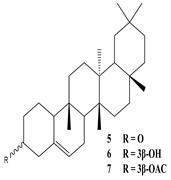 Glutinone, Glutin-5-en-3β-ol, Glutinol acetate 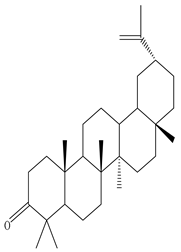 Lupenone  Epitaraxerol, Epitaraxeryl acetate, Taraxeryl acetate  β-Amyrin, β-Amyrin acetate 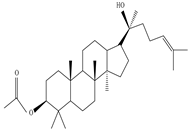 Dammarenediol II acetate 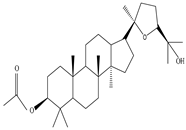 Cabraleadiol monoacetate 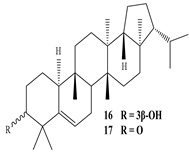 3β-Simiarenol, Simiarenone 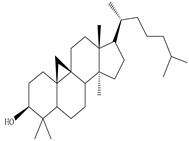 Cycloartenol  24-Oxocycloart-25-en-3β-ol  (23Z)-Cycloart-23-ene-3β,25-diol 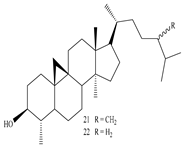 29-Norcycloartanol 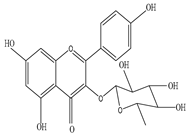 Afzelin |
Triterpenoids showed anti-viral activity in comparison to actinomycin D, Found to be effective against the herpes virus and inhibits replication of SARS-COV by binding to its 3CL pro proteases | [27][36][47][28,57,72] | For fencing | As it is covered with spines | [27][57] | ||||
| Leaves | Aqueous extract | Flavonoid |
|
 Kaempferol |
Kaempferol modulates metastasis, inflammation, angiogenesis, and apoptosis, and provides protection against chronic diseases by activating the body antioxidant defense mechanism against free reactive species | [48][49][73,74] | Leaves | Asthma | Succus administration comprising leaf juice and simple syrup in a minimum dosage of 10–20 mL three times a day | |
| Leaves | Ethyl acetate extract | [ | 9] | |||||||
| Diterpenoids (Eurifoloids A–R) |
|
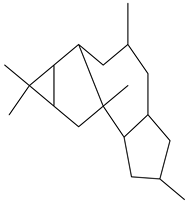 Ingenane (1&2) 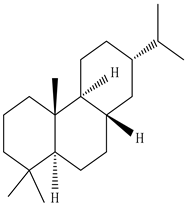 Abietane  Isopimarane 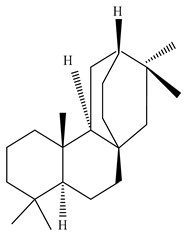 Ent-atisane |
Various diterpenoids such as ingenanae, abietane, isopimarane, and ent-atisane exhibit anti-HIV activity | [50][75] | Earache | Leaf juice | [9 | |||
| Leaves | ] | |||||||||
| Methanol extract | Cycloartane terpenoids |
|
  Neriifolins A, Neriifolins B  Neriifolins C |
Neriifolins A–C showed cytotoxicity against MCF breast cancer cell line with IC50 value of 9.50, 7.12, and 13.14 µM | [51][76] | Wound healing | Steamed leaves paste on the affected area for 4–5 days | [9][16][9,48] | ||
| Leaves | Methanol extract | Pachypodol |
|
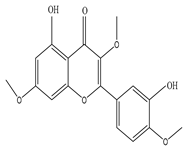 5,40-Dihydroxy-3,7,30-trimethoxyflavone |
Inhibits the proliferation of Psudomonas aeruginosa, Escherichia coli, Streptococcus faecalis, Streptococcus aureus, Bacillus subtilis, Candida glabrata, Candida krusei, and Candida albicans | [27][57] | Arthritis, skin wart | Leaf juice | [17][49] | |
| Leaf | Chloroform and ethanol extract |
|
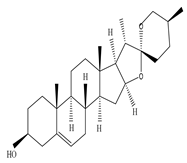 Saponin 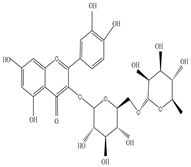 Rutin 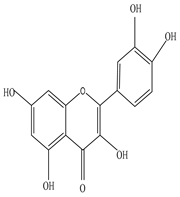 Quercetin |
Saponin shows anti-microbial activity against Staphylococcus aeruginosa, Escherichia coli, and Pseudomonas aeruginosa; Rutin inhibits the activity of Cryptococcus gattii, and Cryptococcus neoformans; and Quercetin found to be effective against Candida albicans |
[9][27][44][52][9[,5753,69,77],78] | Bleeding piles, ano-rectal fistula, bronchitis, cold, and cough | As a diuretic and aphrodisiac | [28] | ||
| Leaves | _ | [17] | ||||||||
| Diterpenoids |
|
 Phorneroids A 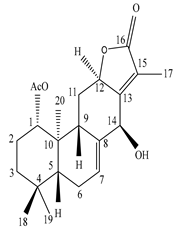 Phorneroids B  Phorneroids C 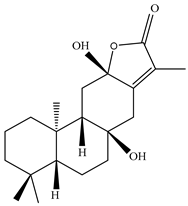 Phorneroids D  Phorneroids E, F 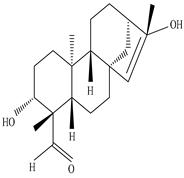 Phorneroids G 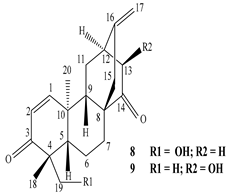 Phorneroids H, I  Phorneroids J, K, L 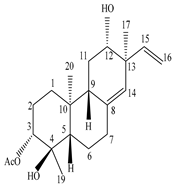 Phorneroids M  Compound I 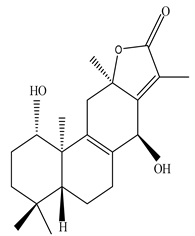 Compound II  Compound III |
Phorneroids A–M, and three known compounds exhibit moderate cytotoxic activity against HL-60 and A549 cancer cell line | [54][79] | Stem | Direct expectoration of phlegm | Stem juice at a small dosage with honey and borax | [28][17] | ||
| Leaves | _ | Ingenane and ingol diterpenoids |
|
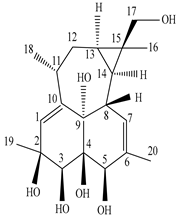 Phonerilins A  Phonerilins B, Phonerilins C, Phonerilins D, Phonerilins E, Phonerilins F, Phonerilins G, and 2 analogues 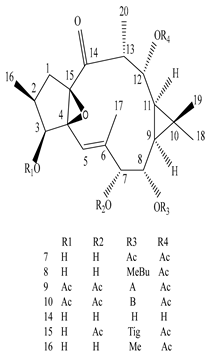 Phonerilins G, Phonerilins H, Phonerilins I, Phonerilins J, Phonerilins K, and three analogues |
Phonerilins A–K, and five known analogues exhibit moderate cytotoxic activity against HL-60 and A549 cancer cell line | [55][80] | Hydrophobia | Pulp of the stem mixed with fresh ginger | [28][17] | |
| Stem | Ethanolic extract | Euphane and tirucallane triterpenes |
|
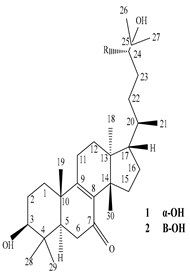 Neritriterpenols A, Neritriterpenols B 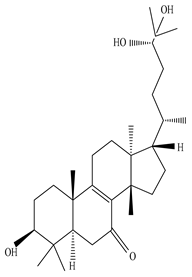 Neritriterpenols C 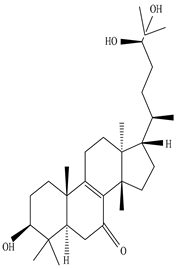 Neritriterpenols D 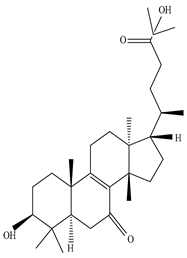 Neritriterpenols E 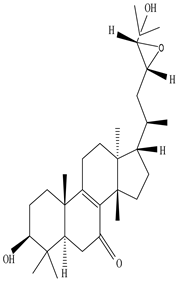 Neritriterpenols F  Neritriterpenols G 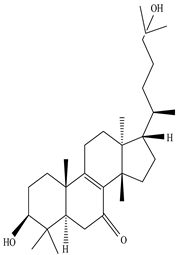 Triterpene 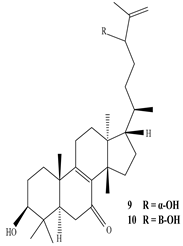 Triterpenes 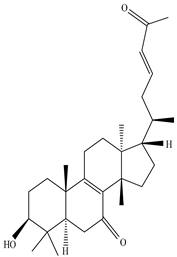 Triterpenes |
Neritriterpenols A–G, and four known triterpene exhibit anti-proliferative and anti-inflammatory activities | [12] | Piles and fistula | Stem juice | ||
| Stem bark | Ethyl acetate extract | [28][17] | ||||||||
| Ingenane-type diterpenoids |
|
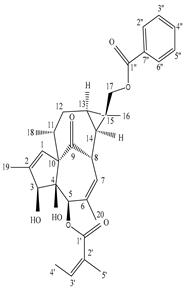 Eurifoloid E 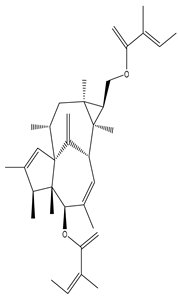 Euphorneroid A |
Eurifoloid E and Euphorneroid A inhibit pro-inflammatory mediators such as iNOS, IL-6, IL-1β, and NO in cases of LPS-induced RAW264.7 macrophage |
[56][81] | Chronic respiratory problem | |||||
| Stem bark | Stem juice with black pepper | [27][ | Methanol extract57] | |||||||
| Diterpenes |
|
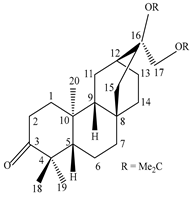 Ent-3-oxoatis-16α,17-acetonide |
Exhibits anti-HIV activity with EC50 value of 8.7 µg/mL | [57][82] | Latex | Drastic cathartic condition | Latex juice | |||
| Stem and Bark | [ | 15 | ][20] | |||||||
| Methanol extract | Diterpenes |
|
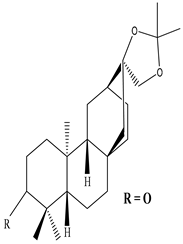 Ent-3-oxoatisan-16α, 17-acetonide  Euphorneroid D |
Ent-3-oxoatisan-16α, 17-acetonide and Euphorneroid D exhibit anti-HIV activity with EC50 value of 24 and 34 mM | [58][83] | Piles | Latex juice with turmeric | [15][20] | ||
| Stem and Bark | Ethanol and petroleum ether extract | Anthocyanin |
|
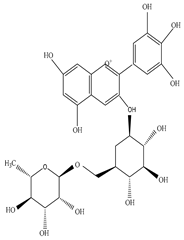 Tulipanin  Pelargonin |
Tulipanin inhibits the proliferation of Bacillus subtilis, E. coli, P. aeruginosa, and Staphylococcus aureus | [27][45][57,70] | Warts | Latex juice | [ | |
| Stem and Bark | 20 | ] | Methanol extract[51] | |||||||
| Triterpene alcohol |
|
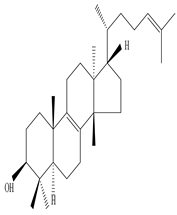 Euphol |
Euphol exhibits an anti-nociceptive effect in neuropathic pain and inflammatory conditions | [45][ | Skin warts, arthritis, and earache. | Latex juice | [16][48] | |||
| Opthalmia | Milky juice in combination with shoot | [15][16][29][20,48,58] | ||||||||
| Rheumatic infection | Milky juice in combination with margosa oil | [15][16][29][20,48,58] | ||||||||
| Unhealthy ulcer, glandular swelling, and scabies | EN latex juice with fresh butter | [15][16][21][29][20,48,52,58] | ||||||||
| Cracks in their foot soles | Boiling latex with castor oil and salt | [15][16][29][20,48,58] | ||||||||
| Wounds and burns | Milk of E. neriifolia latex | [15][16][29][20,48,58] | ||||||||
| Reduce swelling in piles, pain, and itching | Lukewarm extract | [15][16][29][20,48,58] | ||||||||
| Asthma | Five drops of latex juice containing gokaran root, agaba root, and madar flower with honey | [9] | ||||||||
| Vitiligo, fistula, and syphilis | Latex juice | [15][25][26][30][20,55,56,59] | ||||||||
| Leprosy, general anasarca, dropsy, syphilis, spleen and liver enlargement | Trivit root, chebulic myrobalans, long-peppers, clove soaked in latex juice for a month and then dried to form pills | [9] | ||||||||
| Ascites, anasarea, and tympanitis | Latex juice with chebulic myrobalan, trivit root, and long pepper | [15][20] | ||||||||
| Protection against herbivorous insects | Latex | [31][36] | ||||||||
| Bark | Semen passing with urine | Mixture of bark and leaves of Piper betle L. | [32][45] | |||||||
| Roots | Snake bites and scorpion stings | Root of E. neriifolia in combination with black pepper | [9][15][32][9,20,45] | |||||||
| Blood pressure | A small dosage may increase blood pressure and a high dosage may decrease blood pressure | [9][15][32][9,20,45] | ||||||||
| Dropsy | Boiled mixture of root-bark in water | [9][15][9,20] |
3. Phytochemical Composition
3.1. Terpenes
3.2. Flavonoids
3.3. Saponins
| Plant part | Extracts | Secondary Metabolite | Types | Structure | Pharmacological Activity | References |
|---|---|---|---|---|---|---|
| Whole plant | Methanol extract | Diterpenoids |
|
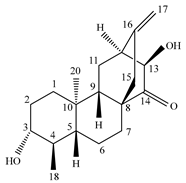 Eupnerias G 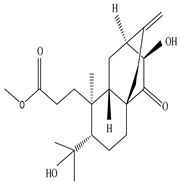 Eupnerias H  Eupnerias I, ent-16α,17-dihydroxyatisan-3-one, Eurifoloid R 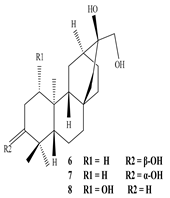 Ent-atisane-3α,16α,17-triol, Ent-atisane-3β,16α,17-triol, Ent-atisane-1β,16α,17-triol  4,13β-Dihydroxy-14-oxo-3,4-secoatis-16-en-3-oic acid methyl ester 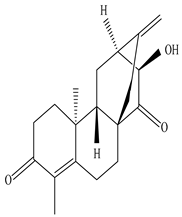 Eurifoloid M 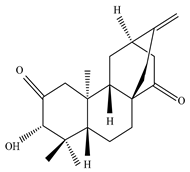 Ent-3S-hydroxyatis-16(17)-en-1,14-dione  Ent-3α,13S-dihydroxyatis-16-en-14-one, Ent-3β,13S-dihydroxyatis-16-en-14-one, Ent-13S-hydroxyatis-16-ene-3,14-dione 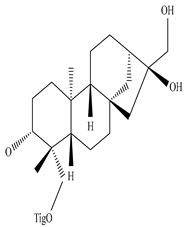 (4R,5S,8S,9R,10S,13R,16S)-Ent-16α,17-dihydroxy-19-tigloyloxykauran-3-one |
Anti-HIV effect was shown by compound 4 and 5 with EC50 values of 6.6 ± 3.2 and 6.4 ± 2.5 μg/mL, Moderate cytotoxic activity was exhibited by compound 1 and 6 against HepG2/Adr and HepG2 cells with IC50 values of 13.70 and 15.57 μM, and compound 15 was reported to exhibit cytotoxic activity (IC50 = 0.01µM) against HepG2 but not against HepG2/Adr cell line |
[11] |
| Whole plant | Hexane extract | Triterpene and Triterpene alcohol |
|
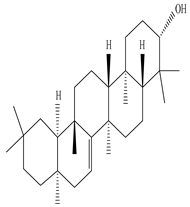 Taraxerol 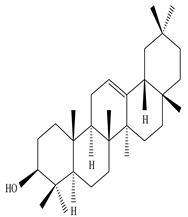 β-Amyrin |
Taraxerol exhibits anti-cancer activity via Nf-kB signalling pathway inhibition or by induction of apoptosis in case of middle ear epithelial cholesteatoma cells | [45][46][70,71] |
| Leaves | Hydroethanolic extract | Flavonoids |
|
 2-(3,4-dihydroxy-5-methoxy-phenyl)-3,5-dihydroxy-6,7-dimethoxychromen-4-one (C18H18O9) |
Exhibits anti-cancer activity due to its ability to scavenge reactive oxygen species and to inhibit lipid peroxidation | [41][66] |
| Leaves | Ethanolic extract |
|
 Glycosides |
Inhibits the proliferation of Plamodium falciparum with IC50 values of 5.4, 4.1, and 1.1 µg/mL, and shows cytotoxic activity against KN3-1 human epidermoid cancer cells | [47][72] | |
| Leaves | Ethanolic extract | Triterpenoids
|
| |||
| 59 | ||||||
| ] | ||||||
| [ | ||||||
| 70 | ||||||
| , | ||||||
| 84 | ||||||
| ] | ||||||
| Stem barks | ||||||
| Ethyl acetate extract | ||||||
| Ent-isopimarane diterpenoids |
|
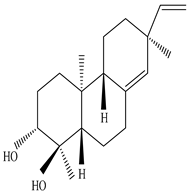 Eupneria J  Eurifoloid H 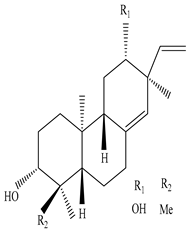 Ent-isopimara-8(14),15-dien-3β,12β-diol |
Eupneria J, Eurifoloid H, and ent-isopimara-8(14),15-dien-3β,12β-diol exhibit anti-HIV activity with an IC50 value of 6.70 and 0.31 µg/mL and anti-influenza activity with an IC50 value of 3.86 µg/mL | [60][85] | ||
| Stem bark | Ethyl acetate extract | Ent-abietane diterpenoids |
|
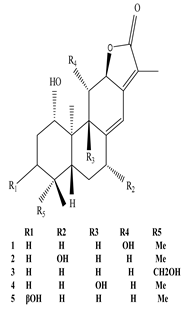 Eupnerias A–E 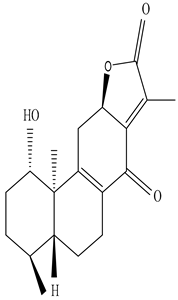 Eupnerias F |
Exhibit anti-influenza and anti-inflammatory activities | [61][86] |
| Bark | Petroleum ether extract | Diterpenes |
|
 Pelargonin-3,5-diglucoside  n-Hexacosanol 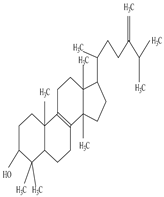 Euphorbol |
n-Hexacosanol was found to be effective to treat diabetic ileum by ameliorating the overexpression of M(3) and M(2) mRNA receptor | [45][62][70,87] |
| Fresh Latex from stem | Crude extract |
|
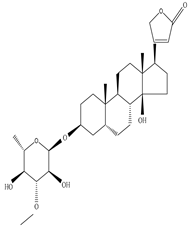 Neriifolin-S |
Neriifolin-S exhibits milk clotting activity | [22][53] | |
| Dried Latex | Methanol extract | Triterpene and Triterpene alcohol |
|
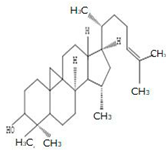 Cycloartenol  Nerifolione 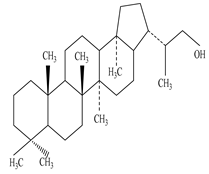 Nerifoliol |
Cycloartenol, Nerifolione, and Nerifoliol inhibit p38 MAP kinase phosphorylation and migration of glioma cells |
[33][45][63][60,70,88] |
| Root | Petroleum ether extract | Diterpenes |
|
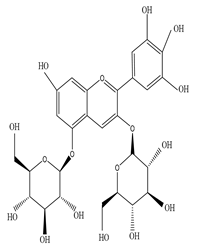 Delphin 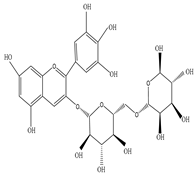 Tulipanin |
Delphinidin 3,5-O-diglucoside and Tulipanin exhibit antioxidant activity by suppressing the formation of reactive oxygen species from lacrimal gland tissue that preserves tear secretion | [45][64][65][70,89,90] |
| Root | Ethanol extract |
Triterpene alcohol |
|
 Cycloartenol 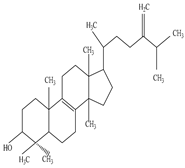 Euphorbol |
Cycloartenol exhibits antioxidant activity | [45][66][70,91] |
| Root | Methanolic extract | Diterpenes |
|
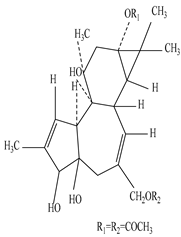 12-Deoxyphorbhol-13, 20-diacetate 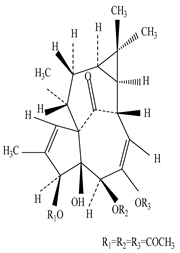 Ingenol triacetate |
12-Deoxyphorbhol-13, 20-diacetate and Ingenol triacetate exhibit anti-HIV activity in the case of MT-4 cells at 0.65 and 0.051 mM concentration, and are useful to treat the skin condition, actinic keratosis | [45][67][68][70,92,93] |
| Fresh Root | Protease fraction | Diterpenes |
|
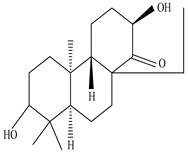 Neriifolene 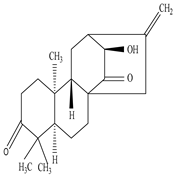 Atisine diterpene anti-quorin |
Atisine diterpene anti-quorin exhibits wound healing activity by inducing the intercellular signaling and aggregation of platelets vis PAR-1 | [45][69][70,94] |
